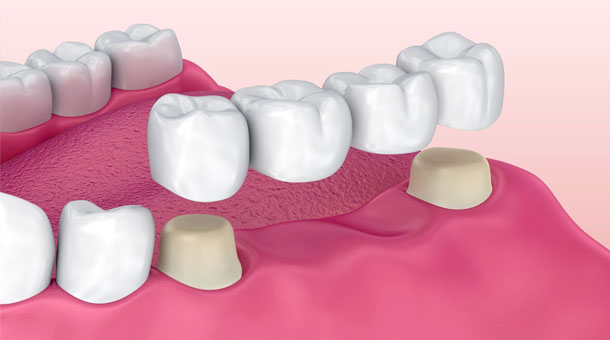
What is a dental bridge and when to use it?
The insertion of a dental bridge is necessary when the lack of teeth is extensive, even in the case of the loss of several adjacent teeth. The use of a dental bridge placed on one’s own teeth is only possible if there are non-moving, non-inflamed teeth on either side of the missing tooth. These will be the bridge’s so-called “Pillars,” to which we attach the bridge that fills the missing teeth. If there is no tooth on which the bridge can be attached, then an implant needs to be inserted in which the bridge can be placed.
The parts of the bridge are the crowns glued to the teeth and between them the artificial teeth that fill the gap, i.e. the bridge body. The bridge is a casting (the whole thing is in one), the material of which is the same as that listed for the crowns (except for a full ceramic crown).
Advantages of a dental bridge made on natural teeth:
- Several missing teeth can be replaced in a short time. (7-10 days)
- Unlike a dental implant, no surgical resection is required.
- Aesthetic result, it cannot be stated about the teeth in the bridge that it is not a real teeth.
- It can be used in the same way as real teeth.
- Significantly cheaper than an implant bridge.
Disadvantages of the dental bridge:
- If there is no tooth on either side, it cannot be used without implantation.
- It may be necessary to grind intact or barely filled teeth in order to make the bridge.
- When wearing a dental bridge, it is especially important to have a regular. (6-month) dental check-up to check the condition of the teeth and gums under the bridge and to protect their health.
